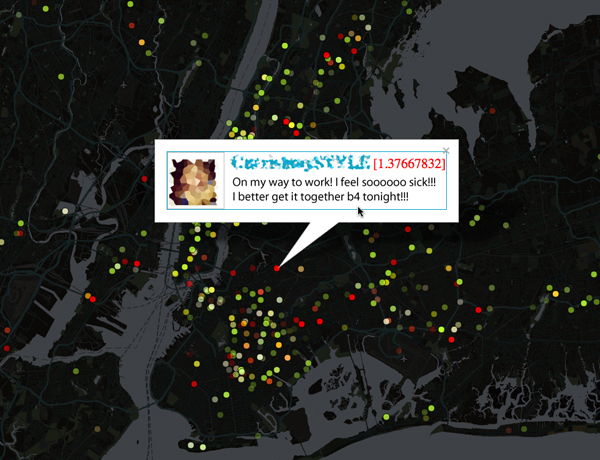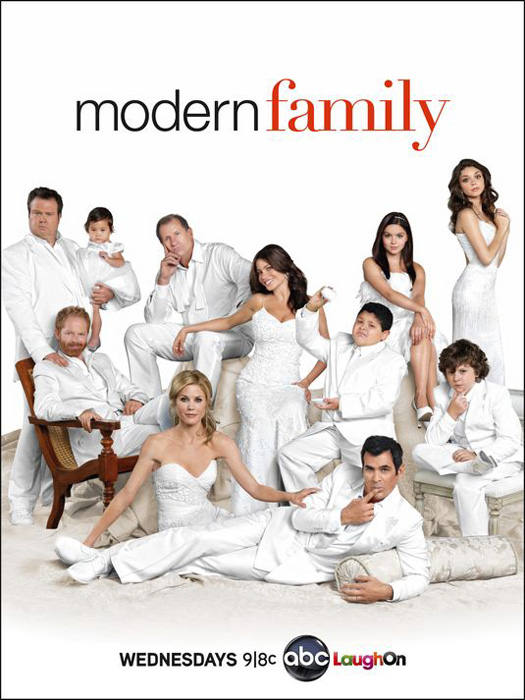The more you Tweet, the more I'll know you're about to quit
Check out the findings from a very cool study out of the University of Rochester, (hey, that's where I live), designed to assess whether or not researchers could accurately predict whether or not a given individual in New York City would come down with the flu based on analyses of geo-location tagged tweets. Adam Sadilek, University of Rochester
Adam Sadilek, University of Rochester
Essentially, the answer was yes, that when applying a sophisticated machine-learning algorithm to over 4 million tweets, from over 600,000 users over a one-month period, the researchers were able to predict when healthy people were about to fall ill - and then tweet about it - with about 90 per cent accuracy out to eight days in the future.
From the New Scientist piece summarizing the study findings:
If you've been walking around a public place lately, you've come in contact with a lot of people. Some of those people may have been sick. And if you've been hanging around enough of them as they cough and sneeze, then you might be about to get sick too.That may sound obvious, but Adam Sadilek at the University of Rochester in New York and colleagues have applied the idea to a pile of Twitter data from people in New York City, and found that they can predict when an individual person will come down with the flu up to eight days before they show symptoms.
Makes perfect sense right?
If you happen to go to enough places where other sick people have been, the chances increase that you'll get sick as well. And in the social media age, with our insatiable appetite to share the mundane and pedestrian developments in our lives with the entire universe, 'OMG, I feel so terrible today. I just want to crawl back under the covers' as you check-in on Foursquare, smart machines can mine that data, compare it to actions of the next batch of (for the moment), healthy people, and offer really informed predictions about the likelihood of who will fall ill next. Thanks for speading your disgusting germs all over town by the way.
Taking the premise and approach from the UofR (that is a well-known shortener for the University of Rochester up here), to additional and logical ends, then it certainly seems possible, and probable, that soon we'll have smart machines that will be able to examine the social network signals to predict all kinds of likely actions and behaviors.
It used to be a dead giveaway in offices when a colleague had a job interview somewhere else - he or she would suddenly show up to work dressed impeccably - new suit, new shoes, hair just right, etc. That signal, (while still solid), morphed to the digital age in the form of the LinkedIn profile update. Hmm. Why did Joe just update his profile and add a picture after all these years? What's he up to?
But the showing up in a new suit at work, or even the LinkedIn update are behaviors four, five, or six steps removed from whatever initial signals someone might take who is thinking of a career move. That new suit had to come from somewhere? Did Joe check in at the local Jos. A Bank in the last two weeks?
That LinkedIn profile update? Was that preceded by joining a few new groups, or connecting to a few new people? Did some Facebook pictures from the last company picnic, taken after perhaps a few too many PBRs were consumed, suddenly disappear?
Truth is, whether used for predicting who next will get the flu, or who might be giving their 2 weeks notice on Monday - increasingly the clues are out there - in a string of Tweets, check-ins, status updates, and the like.
As we continue to live our lives online, and on display, the signals we send as to what we really have in mind, and our devious little plans will become more and more discoverable.
Eventually, we'll know even more about each other. Not just what we have been doing, but what we are about to do next.
Happy Monday everyone!

 Steve
Steve




